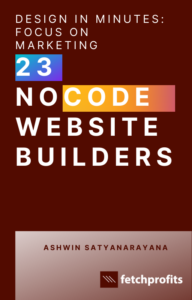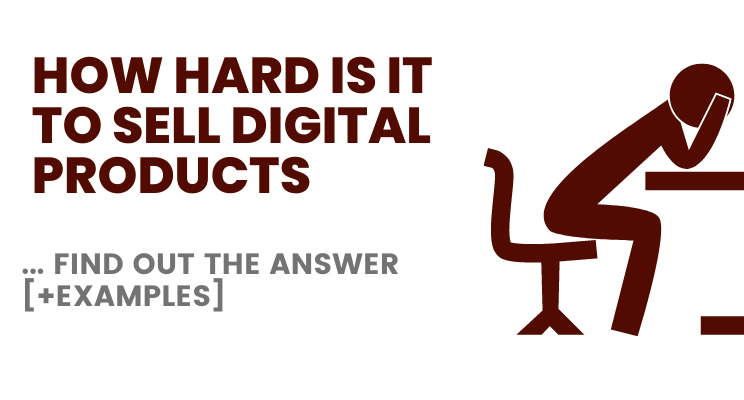How hard is it to sell digital products, you ask?
Shortest answer in the world: very hard.
Matt Ragland was an early team member who helped brands like Convertkit and Podia grow.
He now helps content creators monetize and sell “their expertise” along with his own line of products such as Most Productive Week Ever (MPWE) Course (On Podia, Woo Hoo! — Got to love that platform); a short course on Productivity Pillars: his 5-day email course on Productivity.
Matt also runs the “Connect The Dots” Podcast, has a YouTube channel with 60,000+ subscribers, and more.
He wrote a thread on Twitter on his journey as a content creator.
Don’t skip this thread 👇
Here’s what I learnt:
- Matt took an eventful (I am sure) 5 years, well over 1000+ customers, and countless launches to hit $100,000+ in revenue (and counting)
- Consistency is supreme (Now, that’s why I insist on blogging regularly with a publishing velocity, blogging for a purpose, and why consistency is the easiest SEO low-hanging fruit you could use to grow your business?).
- While Matt might be using several tools to run his business, his primary marketing stack had just three: Convertkit for email marketing; Podia as the platform for his digital products (including workshops, and Zoom for going live (and for his workshops).
- Follow up. Ask. Request feedback. Learn. Implement. Repeat.
- Work on content formats that work best for you: YouTube? Live streams? Blog Posts? or maybe all of them? Choose. Then, execute.
I have tremendous respect for content creators who do well — selling high quality coaching programs (that really help); memberships; digital products such as eBooks; online courses and more.
Respect. Because it’s something that I still struggle to do.
Most of what you read online about selling digital products, however, take it with a pinch of salt.
Do Online Courses Make Money? Really?
Or Is it Diddle Squat?
Do you love stories? Get coffee. Dig in. Here’s a list of Content creators making “something”:
- How Khe Hy Left Wall Street and Turned a 36-person email list into $500,000+ Content Creator Business
- How Natalie Sisson Went From a Stuck 9-5 to Freedom
- How John D. Saunders Make $100,000 (still counting) With a Single Online Course
- How Dorie Clark $269,761 from Her Online Course in 18 months
- How Elizabeth Rider Built a 7-Figure Health & Wellness Business Online
- How Entrepreneurs On Fire Made $50,000 in 2 months with a Free Online Course
Now, we aren’t even counting or mentioning those who succeed on platforms like and Payhip, Shopify, WordPress, and Gumroad.
Don’t tell me it can’t be done. I refuse to believe.
Read:
Benefits of Online Courses [+ 8 Convincing reasons]
Basics of Online Course Creation : Do it Right
Selling Digital Products: 1 Million Screws on a Jet plane
If Matt’s story is anything to go by, there are thousands of things you have to get right. Like getting a million screws on a Jet kind-of right.
Note: You are not making a Jet. So don’t waste time with perfectionism.
- Your inertia
- The demons in your head
- Conquering fear (like I have, when it comes to videos); choosing the right eCommerce platform or the right stack of tools for selling digital products
- The entire slew of work that goes into creating your digital products — like eBooks, fonts, illustrations, notion templates, Airtable templates, Canva Templates, Visme Templates, WordPress themes, online courses, memberships, coaching programs, and so on (phew, that list was huge). In case you are wondering, here are some of the best digital products to sell.
- Marketing, promoting, and selling your courses or digital products. Marketing — by the way — certainly includes a lifetime’s worth of content creation. [For another day, pretty please].
- Constant Follow-up, learning from your mistakes, and sometimes starting from scratch.
- Creating communities around your brand/business/products. [Read: 11 Best Online Community Platforms for Content Creators]
See my digital products, online courses, and more.
Creating & Selling Digital Products: It’s All About the Choices You Make
Most online course creators somehow move mountains, scrape the plains, and launch.
It all starts with making the right choices. Knowingly or unknowingly, most of us start with making bad choices: Like selling on Udemy for Instance. (Ah, How I wasted my time, efforts, and opportunities with that one)
I remember selling my freelancing course on Udemy for $39. Out of that, Udemy would trash my price down to $9 or $10. I’d finally get $2 for my course.
My courses are Off Udemy now. [They are being moved to Payhip] I’d rather die hungry than work to make $2 per sale.
Do you really want to do mistakes like I did? I’d rather you don’t.
Then, there are the technical challenges that are a pain point [To begin with]
- Dealing with half-featured online course platforms that give you bread (but not peanut butter or cheese).
- Platforms that nickel-and-dime you for features that you should have had access to.
- Stitching things (like plugins, tools, marketing apps, and so on) to make something work.
- Putting up with terrible UX/UI (Even fancy fonts are an eye-sore)
- The plate comes with XYZ features. Doesn’t come with ABC features. So, you end up having to “buy more”.
- Complex pricing.
- Eating into what you earn.
Or, think about challenges you’d face from a purely marketing point of view:
- You need custom domains (so that your online course URLs look something like [yourbrand]dotcom/[yourcoursename]. Should have been simple enough.
- Adding additional pages to your new course site would be great. Some course platforms don’t give that kind of privilege.
- Having the ability to brand your pages, add your content, allow you to write blog posts, and so on would be basic things to help you sell online courses. Forget about those features.
- You know that Free online courses are a great way to establish trust, to generate leads, and to build your community. Some course platforms do everything to disallow you from giving things away for free. Or, there’d be roundabouts that’ll leave your head scratching.
- Want to make email marketing work? Use ConvertKit, MailerLite, Drip, MailChimp or something else and find a way to integrate that.
- You want to build a community. The best you can do is create a Facebook group?
See where I am going with this? Thousands of little things that’ll eat your soul away.
So far, Podia, Payhip, and Thinkific are the only platforms that give you all of the above.
Payhip comes in at a second place (but is free to use with a simple pricing. Upgrades are optional).
Read more:
Choosing Online Course Platforms: Podia Vs WordPress Vs Shopify Vs Webflow
Platforms to Sell Digital Products: 3 Free Options
Selling digital products is possible. Here are top digital products you can consider working on. Countless stories (true ones) abound.
So is it hard to sell digital products? Yes, yes.
The question we all need to ask: What’s easy?
Share your thoughts. Join our community page on LinkedIn. Follow on Twitter. Check out my YouTube Videos.

GET THE FREE EBOOK
Website design? You ain’t got no time to waste on that. Focus on marketing instead.
Here’s a free ebook with a handy list of “I-don’t-want-to-waste-a-day-with-websites” life saving nocode website builders:

